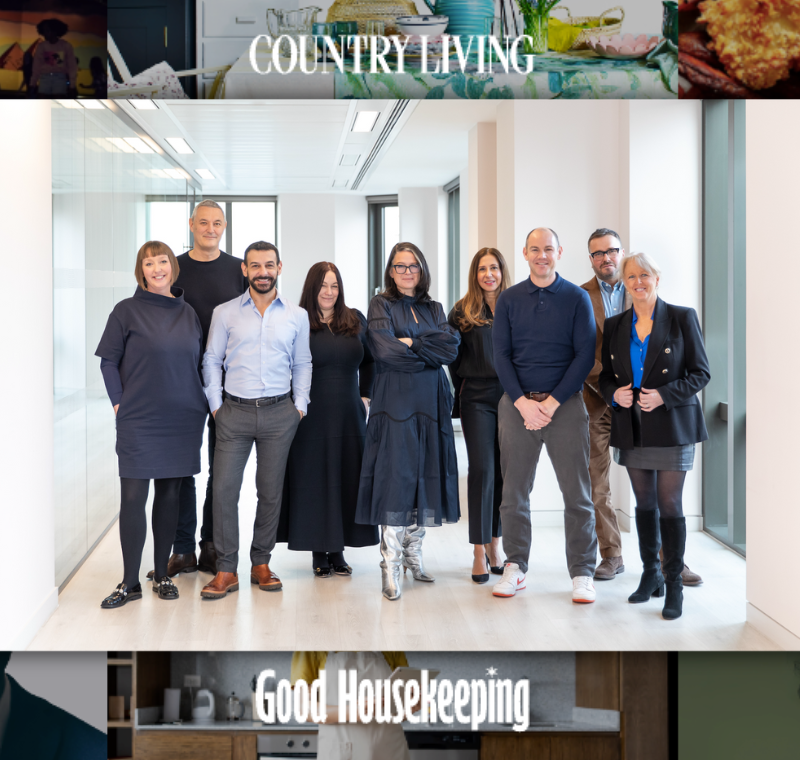Hearst exec on positioning brands for international growth
When chief digital officer Gary Ellis joined the company last year in this newly created role, his responsibilities included overseeing the business’ overall strategy for global web and mobile products. Speaking at the Digital Innovators’ Summit today in Berlin about a digital strategy which works across a number of brands, he pointed out that some of HMI’s markets “didn’t have resources for digital or were just focusing on print”, without regarding digital as an ad-supported business.
Great potential, but a lot of work to try and bring it all together
As the print version of the HMI brands had consistency in terms of how each brand and the content was perceived around the world, the same did not apply to digital. This presented a challenge in the shape of creating a connected digital network of products and teams, “leveraging Hearst’s global footprint and iconic brands”, Ellis said.
The first point tackled by HMI was its technology platform, bringing consistency across the 20 different content management systems used at the time. As digital audiences are changing quickly, Ellis added that “a longer-term or more expensive investment may prevent companies from expanding as quickly as they’d like to”. Digital Spy, Hearst’s digital news and entertainment brands, was used as an example and invested in, in order to create a “connective tissue around the organisation”, Ellis stressed.
Mobile-first platform that works for editors
“It’s all about the content and the volume and you have to empower your editors to work quickly and efficiently”, Ellis stated. The new HMI platform has social-sharing capabilities built in, allowing for audiences to be captured quickly. The way in which content was looked at has also shifted, going “from months to moments”, no longer operating by the rule of “story for print first and digital an afterthought”.
Pivoting from a broadcast to a more interactive and listening mode
The new strategy enables the more experienced journalists at the Hearst brands to still write for the monthly magazine, but also to produce shorter content for digital. This gives audiences a way of interacting and connecting with each other in a space curated according to the brand’s tone.
Leveraging content by sharing
The next step consisted of leveraging the content by connecting and sharing it across the HMI network. This strategy translated to a US version of a magazine sharing an article from the UK version, but also inter-brands, such as Cosmopolitan sharing an ELLE article. The key aspect to remember is that, although these magazines may be approaching different angles when writing a story, they are still tackling the same topic, which facilitates a connection and leads to the formation of a community. Furthermore, the new CMS will contain a new tool for editors, similar to an extent to Google Analytics, which allows them to monitor the content that is trending or being shared across the Hearst network.
Giving the readers dessert first
Hearst’s strategy consists of doing what Ellis called “offering dessert first”, which enables readers to access the “shinier” pieces first in order to grab their attention, followed by the content closer to the brand’s tone. Brands also manifest differently in different markets, an example of which is HMI’s Nigerian edition of Cosmopolitan, where the audience’s interest lies with topics such as female empowerment and how to get ahead in the workplace.
This also ties in with the leverage of time zones and the benefit of having an inter-continental network, as sharing content from another publication in the network can allow editorial teams to focus more on topics relevant to them geographically.
The majority of audiences now coming through mobile
Regardless of how big an organisation is, taking advantage of social media is crucial. Ellis mentioned Facebook as the dominant contributor in traffic growth, alongside increasing share from Twitter, Instagram and Pinterest. However, smaller social networks also have a presence in markets where the mainstream ones are not granted access, such as China.
Thoughts for the future
Ellis also talked about HMI’s “greenfield content strategy” – entering a market without any previous presence. Hearst applied this strategy when launching Cosmopolitan Nigeria, where due to a large proportion of the population being mobile-enabled, there was an opportunity to partner with Estée Lauder and provide native content.
HMI’s future goals include applying this strategy to its other brands, iterating on the platform, sharing content across the network and offering innovative advertising solutions.
Story by Madalina Ciobanu.
More like this
Hearst’s Duncan Edwards on Cosmopolitan’s online-only expansion









